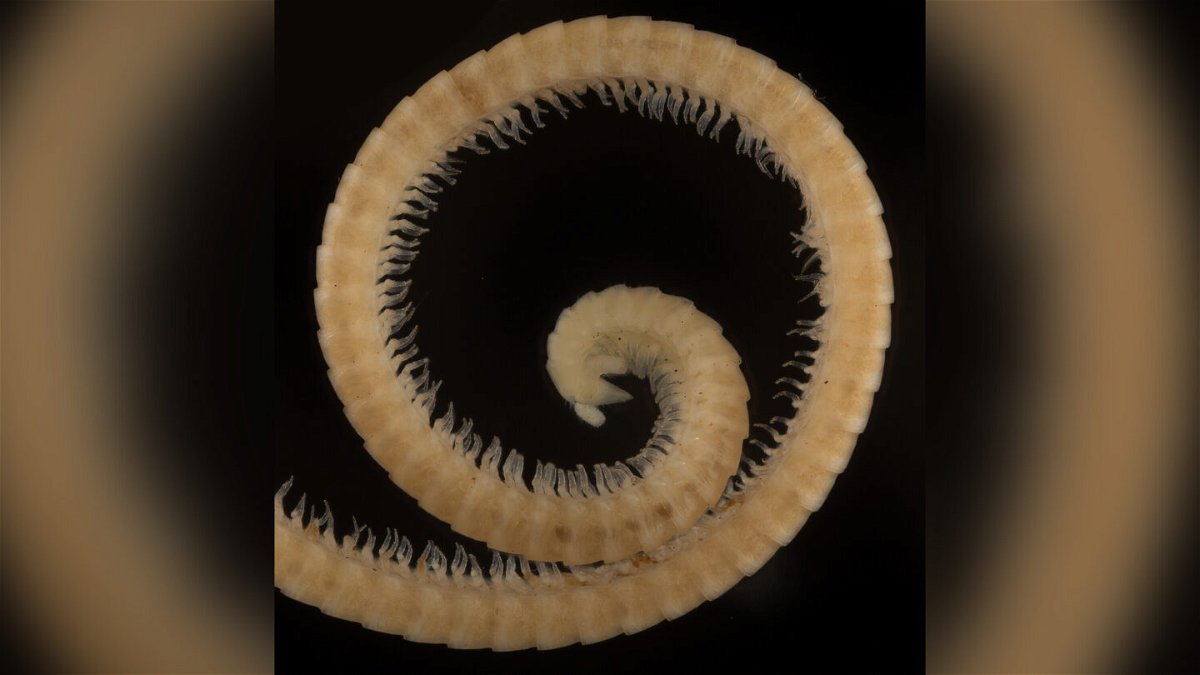The first true millipede has been discovered in Australia. It has the most legs of any living animal

The first true millipede has 330 body segments and is 3.7 inches (9.5 centimeters) long.
By Katie Hunt, CNN
Millipedes have lots of legs. It’s defining feature of this creature, which is neither worm nor insect.
However, despite a name derived from the Latin for thousand (mille) and feet (pes), no millipede has been found with more than 750 legs — until now.
Scientists have discovered the first millipede that has more than 1,000 legs — 1,306 to be precise — and the most legs of any living creature on Earth. It was found living 60 meters (200 feet) below ground in a drill hole created for mineral exploration in Western Australia.
The eyeless invertebrate — it’s 3.7 inches (9.5 centimeters) long and 0.04 inch (1 millimeter) wide — has 330 body segments, antennae, a beak for feeding and a cone-shaped head.
“It’s as if you pulled a 3-inch white thread from a shirt (but it had 1,306 legs),” said Paul Marek, an associate professor at the department of entomology at Virginia Tech via email.
How do you count the legs of such a tiny creature?
To make sure no limbs were missed or counted twice, Marek said he color-coded each 10-leg segment using a high-resolution image of the uncurled millipede in Adobe Illustrator.
“I counted three times, and it took about 1 hour,” said Marek, the author of the study that published in the journal Scientific Reports on Thursday.
It’s possible that Eumillipes persephone, as the millipede is officially named, is distantly related to the previous record holder for the greatest number of legs, according to an analysis of the taxonomic relationships between millipede species. The Californian millipede species, Illacme plenipes, has up to 750 legs.
Navigating an underground habitat
The large number of segments and legs that have evolved in both species may allow them to generate pushing forces that enable them to move through narrow openings in the soil in which they live, the authors suggested.
While the surface temperatures in Eastern Goldfields Province, where the millipede was found, are sometimes higher than 114.8 degrees Fahrenheit (46 degrees Celsius), the groundwater sites where the millipede was collected never exceed 71.6 degrees Fahrenheit (22 degrees Celsius).
The authors, from Australia and the United States, noted that other unknown invertebrates had been discovered beneath the Earth’s surface in recent years — including beetles and millipedes in Brazilian iron ore caves and spiders in the caves of the Edwards Plateau in Texas.
“These underground habitats, and their inhabitants, are critically understudied, despite their ecological importance in filtration of groundwater and screening of environmental toxins,” the authors said in the study.
The researchers recommended minimizing the impact of mining in this region to conserve the underground habitat.
The-CNN-Wire
™ & © 2021 Cable News Network, Inc., a WarnerMedia Company. All rights reserved.